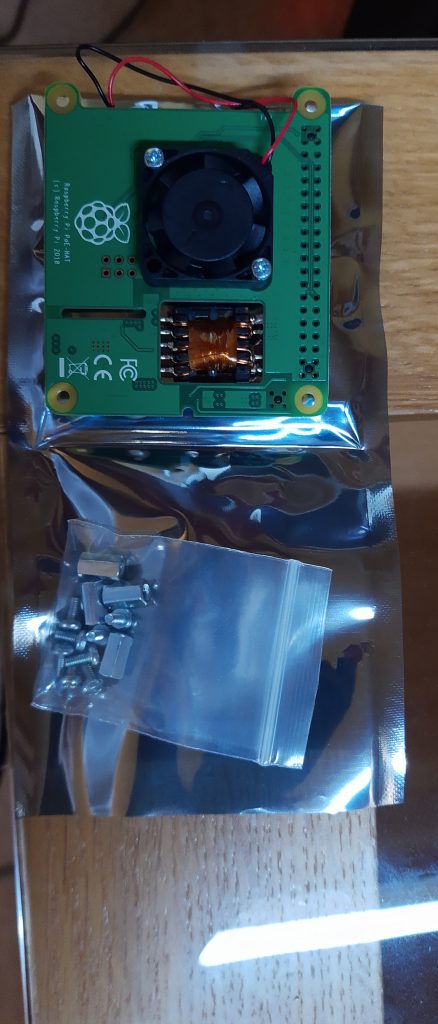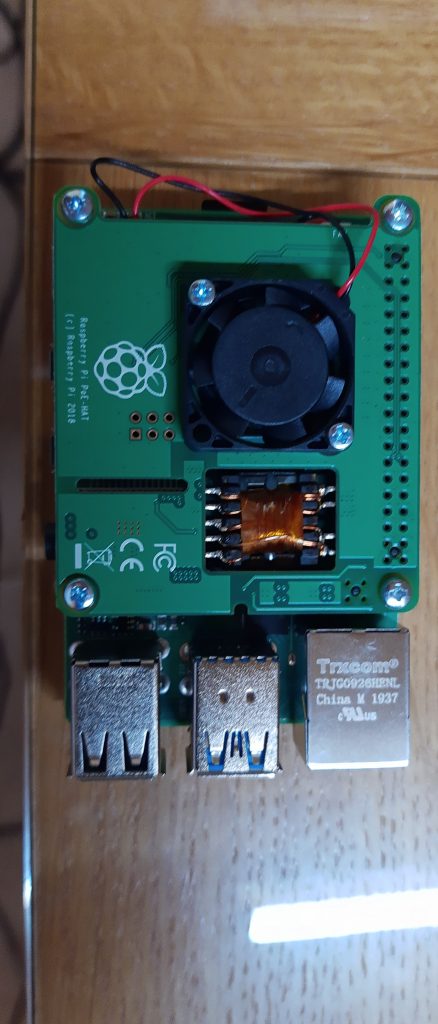I finally received my delivery of POE HATs for my RPi4’s today from CPC, and surprised at how easy they were to fit and get working. This is the first time I have used POE, and made sense to power my Pi bramble this way due to limited sockets where the setup will eventually live.
I purposefully got a switch which had POE ports, I went for the D-Link DGS-110-08P, which is fairly old, but has all the features I need, including 8 POE ports, and because its not cutting edge it was fairly cheap on the ‘zon.
The POE HAT comes with its own set of spacers, which I have used for now, but hopefully will be putting my Pi’s in a stackable case in the near future.

The spacers are easily screwed to the bottom of the RPi :
Once fitted the POE HAT fits snugly onto the GPIO pins, and can be screwed from the other side:

Then it was a simple case of connecting my ethernet cable to one of the POE enabled ports on the switch. I used a cat6 cable for this. As the port was already enabled the RPi started to boot immediately. As expected the POE light on the switch illuminated to show it was drawing power from the port (eth2).
Looking at the switch itself I can see the total amount of power being drawn:
I can also see how much is being drawn by on eth2 with one RPi connected:
And when adding a 2nd RPi (running as a Kubernetes Master):

There is a slight hum as you would expect, when the POE HAT fans kick in, but hardly noticeable. Overall I’m really pleased, especially as it cuts down the amount of cabling and sockets needed to power the cluster.